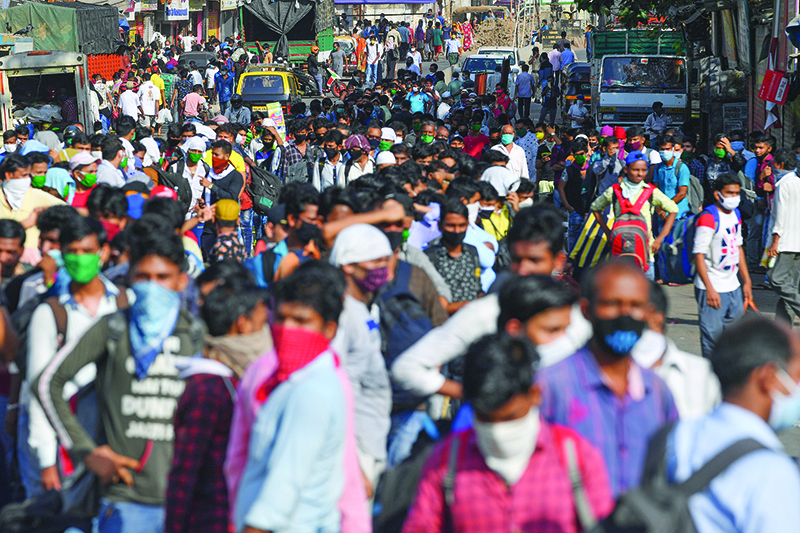

NEW DELHI: India’s enormous railway network was grinding back to life yesterday as a gradual lifting of the world’s biggest coronavirus lockdown gathered pace even as new cases surged. The country of 1.3 billion imposed a strict shutdown in late March, which Prime Minister Narendra Modi’s government has credited with keeping cases to a modest 70,000, with around 2,000 deaths.
But the lockdown, which enters its 50th day tomorrow, has torpedoed the economy, snatching the livelihoods of tens of millions of people and hitting the poor the hardest. Whole industries have been devastated and there are fears of food shortages, while a ban on flights has left hundreds of thousands of Indians stranded abroad. Restrictions have been steadily eased, however, particularly in rural areas, and some Indian trains - on a network which normally carries over 20 million passengers a day - were scheduled to resume yesterday.
More than 54,000 tickets for an initial 30 services sold out online within three hours on Monday, reports said. The first train was to leave New Delhi at 4:00 pm (1030 GMT), followed by others from Kolkata, Bangalore and Mumbai. The government has not set out a program for when more services will resume. There were limited special services laid on after the lockdown was imposed to ferry home some of the millions of poor migrant workers left jobless and destitute by the shutdown. Many people, however, were forced to walk hundreds of kilometers to get home.
Passengers for yesterday’s mostly inter-city services were told to arrive at stations 90 minutes before departure for health screening, and to bring their own food for the journey. Ajay Dewani, a photographer stranded in Ghaziabad with a ticket for Chattisgarh state said he walked for four hours to get to Delhi station. "I haven’t been paid for two months and my landlord was hassling us for rent,” he told AFP, carrying a backpack and pulling a wheeled suitcase.
Usha, a labourer from Madhya Pradesh state, said she and husband and their two children walked for two days to get to the station, only to be turned away because they had no ticket. "We came here to the railway station as we were told that the trains will start working from May 12,” she told AFP. "Where do we go now? We have no money to buy something to eat.”
The number of cases is still rising in India, with more than 3,600 new infections recorded on Monday - just below Sunday’s record of more than 4,000. Major cities including Delhi, Ahmedabad and Mumbai - home to the Dharavi slum area - have been worst hit by the new surge, and health specialists say infections may only peak in June or July. Maharashtra state, home to Mumbai, reported more than 1,000 new cases for the sixth straight day, while the southern state of Tamil Nadu, with Chennai as its capital, recorded a record jump.
Experts say India has not been testing enough of its population and has to be ready for a rise in cases. "I am sure the government is making the decisions based on data. There is nothing in the public domain that gives us confidence,” said Shahid Jameel, who heads the Wellcome Trust/DBT India Alliance. "But on the other hand if we don’t start opening up, more people will die of hunger than COVID,” Jameel told AFP. On Monday Modi held a video conference with state chief ministers to discuss further relaxations of the lockdown when it ends on May 17. – AFP

